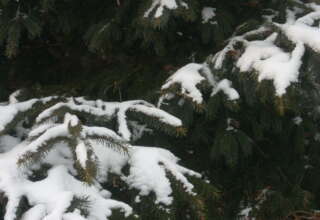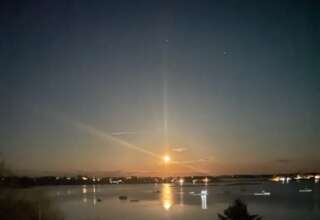
There is finally a fourth type of subsystem in the stream. This is the subsystem that resides on the boundaries between the three other subsystems. When we look at a stream, we see this type of subsystem in the area that exists between the rapidly flowing section of the stream (subsystem one) and the stagnant pool (subsystem three) or between the whirlpool (subsystem two) and either the rapidly flowing or stagnant water. Turbulence and unpredictability are endemic to this fourth subsystem. A leaf that floats into this subsystem begins to move in a highly erratic manner. One cannot predict from moment to moment where the leaf will be. It bobs and weaves, darting from one point to another in a seemingly random manner. Eventually the leaf will end up in the stagnant pool, the whirlpool or the fast lane (subsystem one). Meanwhile (to borrow from the movie All About Eve) it is in for “a bumpy ride!” Two of Arrow, McGrath and Berdahl’s alternative equilibrium attractor systems seem to produce this chaos: (1) contradictory and (2) reversible.
The fourth subsystem is common in postmodern relationships. We find high levels of turbulence and unpredictability in organizations when there is a new boss, when representatives from the marketing and production departments get together, or when innovators try to implement new policies in the face of long-standing bureaucratic structures. We find turbulence and unpredictability outside the organizational setting when a young man and woman meet for the first time at a singles bar, when a daughter first tells her parents about her alternative life style, when a wife tells her husband that she is pregnant with their first child, and so forth and so forth.
It is tempting to describe this fourth subsystem as chaotic, yet in recent years many of the theorists who write about chaos and complexity (notably Stuart Kaufmann) have suggested that this type of subsystem isn’t chaotic—rather it is turbulent. On the one hand, some systems are highly orderly. Kaufmann draws an analogy between these highly orderly systems (often closed with regard to boundaries) and the most stable state in which many ingredients exist, namely, frozen. Ice, for instance, is highly orderly and none changing. There is also a second physical state in which most ingredients exist. This is the gaseous state, which Kaufmann suggests is chaotic. Water vapor, for instance, is unpredictable in its movement and destination—one has only to observe the steam that comes out of a teakettle. According to Kaufmann, a third physical state is represented in the condition that is intermediate between frozen and gaseous. This is the liquid state of an ingredient. Kaufmann suggests that this state represents the interplay between order (frozen) and chaos (gaseous) and is typified by turbulence. Kaufmann would suggest that the turbulence existing in the fourth subsystem of a stream is not chaotic but is instead turbulent.








